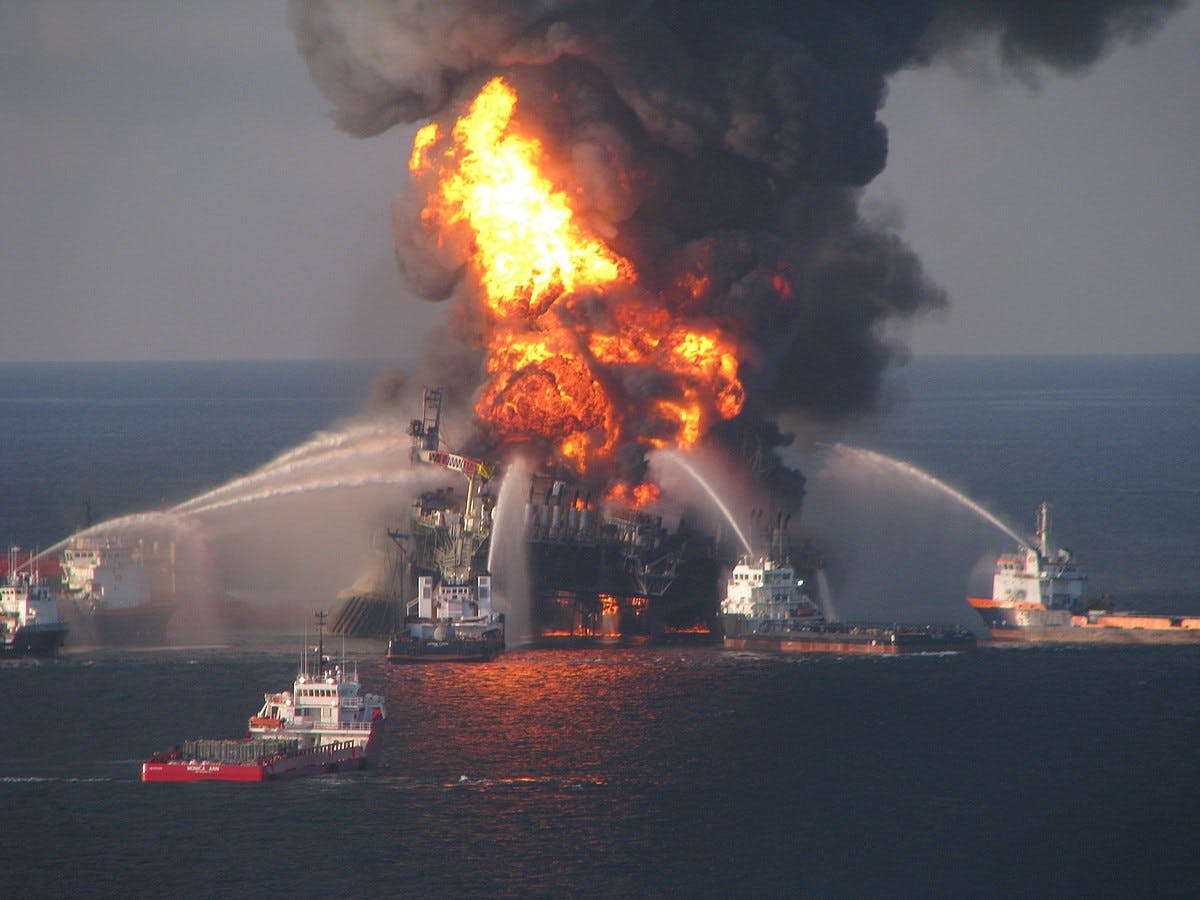
On August 28, 2021, Chett Chiasson looked out from his office in Port Fourchon, Louisiana. Since 2010, he has occupied that office as the port's Executive Director, with a mandate to make it run like clockwork. A day later, they watched Hurricane Ida tear the roof off a port building over a security camera live feed.
Before Ida’s category 5 winds were other storms: Gustav, Ike, Katrina, Rita, Andrew, Carmen, Josephine. There’s an inexorable march of coastal land loss — the waves and the wind take bites out of both the built and natural environments. Louisiana's residential insurance costs, which have increased by 63 percent in the past year, chart the encroachment of the sea.
"If Port Fourchon sounds familiar to you, it’s likely because it was where, in 2010, 4.9 million barrels of oil spilled into the Gulf of Mexico from the BP-operated Deepwater Horizon offshore drilling rig."
The storms and rising sea make places like Port Fourchon feel increasingly treacherous, as if it won’t long be feasible for human habitation. Around the world, even the most optimistic discussions of climate adaptation are tinged with talk of retreat and migration. Countries like Indonesia have moved their entire capital, “abandoning it to save it.” But for someone like Chett, abandonment is not an option. “There is no option between fight or flight. We have to run towards the issue. So, you know, we think a little bit differently.”
18 percent of the U.S.’s oil originates from Port Fourchon — over a billion barrels of oil annually. Each day, a veritable river of oil flows from deep water drilling sites in the Gulf to this port, and then to American cars, homes, factories, and furnaces, where it is burned.
Amidst the homes and people affected by intense weather, the gulf also cradles a critical piece of energy infrastructure. “If we are down for too long,” Chett says, “the price of gas at the pump for everyone in the country continues to rise.”
Post hurricane, staff worked tirelessly through the continuing crisis to clear roads, remove debris, and patch damaged equipment. Nobody expected the port to be up and running just nine days after enduring Ida’s 150 mph winds, but they did it.
But the emissions from the oil produced here are directly linked to the increasingly powerful hurricanes and rising seas that make Port Fourchon less liveable. If Port Fourchon sounds familiar to you, it’s likely because it was where, in 2010, 4.9 million barrels of oil spilled into the Gulf of Mexico from the BP-operated Deepwater Horizon offshore drilling rig. It is a highly entangled place, one that is both responsible for and vulnerable to accelerating climate shocks. Yet part of the port’s climate contradiction is that, after decades of enabling American carbon emissions, it is becoming a leading example of climate adaptation.
How should we reconcile feeding the dog that bites you?
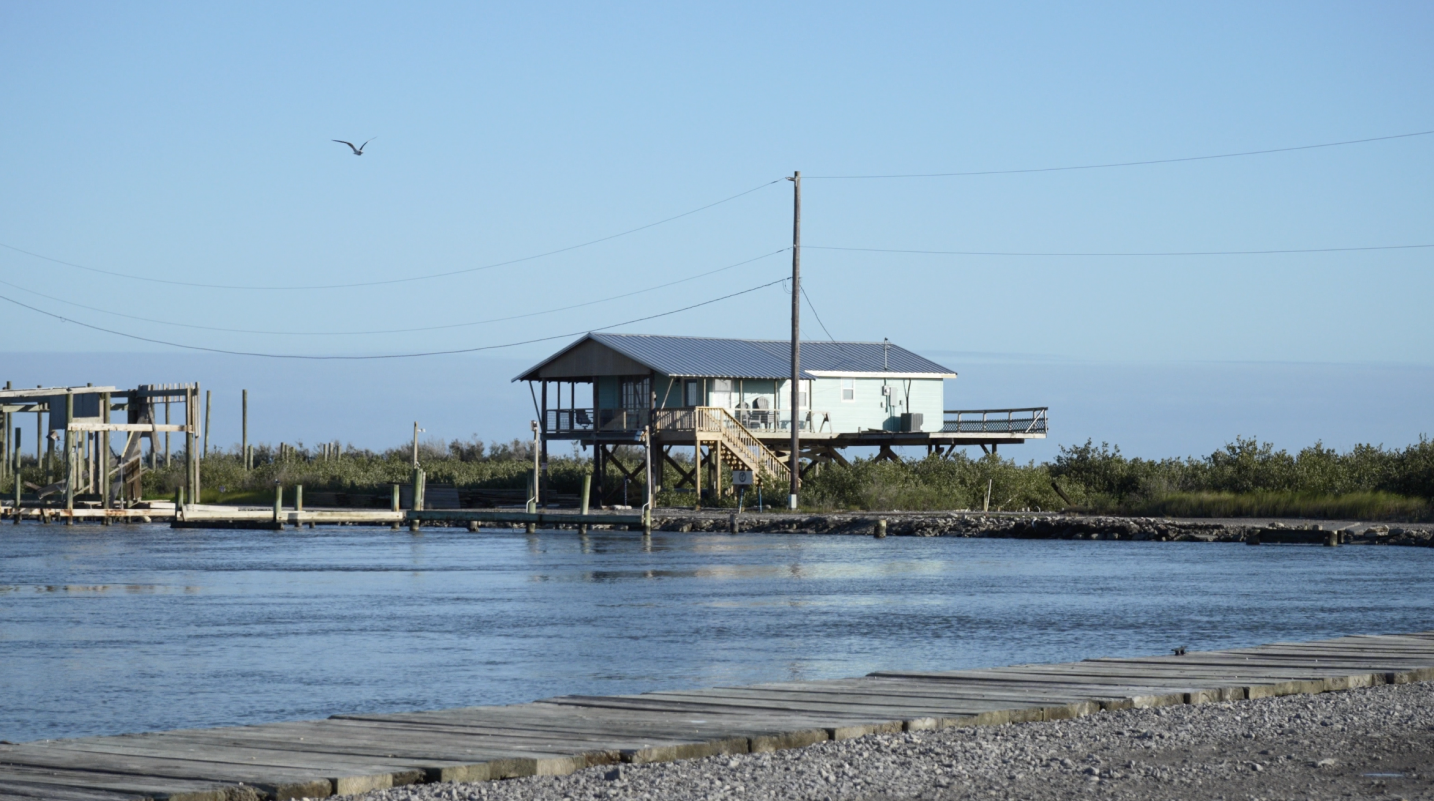
Flood Country
Lyn and I drive by a high school, entirely propped up on stilts — the unofficial welcome sign to flood territory. Lyn lasers in on Google Maps’ directions, trying to get us to our interview on time, while I, the delinquent with a camera, stick the whole rig and the better part of my torso out of the car window to get a good shot of our surroundings.
We had spent the last 6 weeks on the road for this documentary. Lyn listed her house on AirBnb, and I had worked a full time job throughout the school year to help fund our trip. We’d been away from our partners, friends, families, and material comforts to investigate one question: in a politically divided country, can solutions to the climate crisis be found?
We had both learned about climate change before we learned to tie our shoes, and at varying volumes, it had been buzzing in our ears as an existential, all-consuming threat ever since. In some ways, this trip was one half research, and one half therapy. The port was our last stop.
The rest of the road to Port Fourchon was a palatial elevated highway, grand enough to pass as the backdrop of a video game final boss fight. With two minutes to spare, we make it to our interview with Chett.
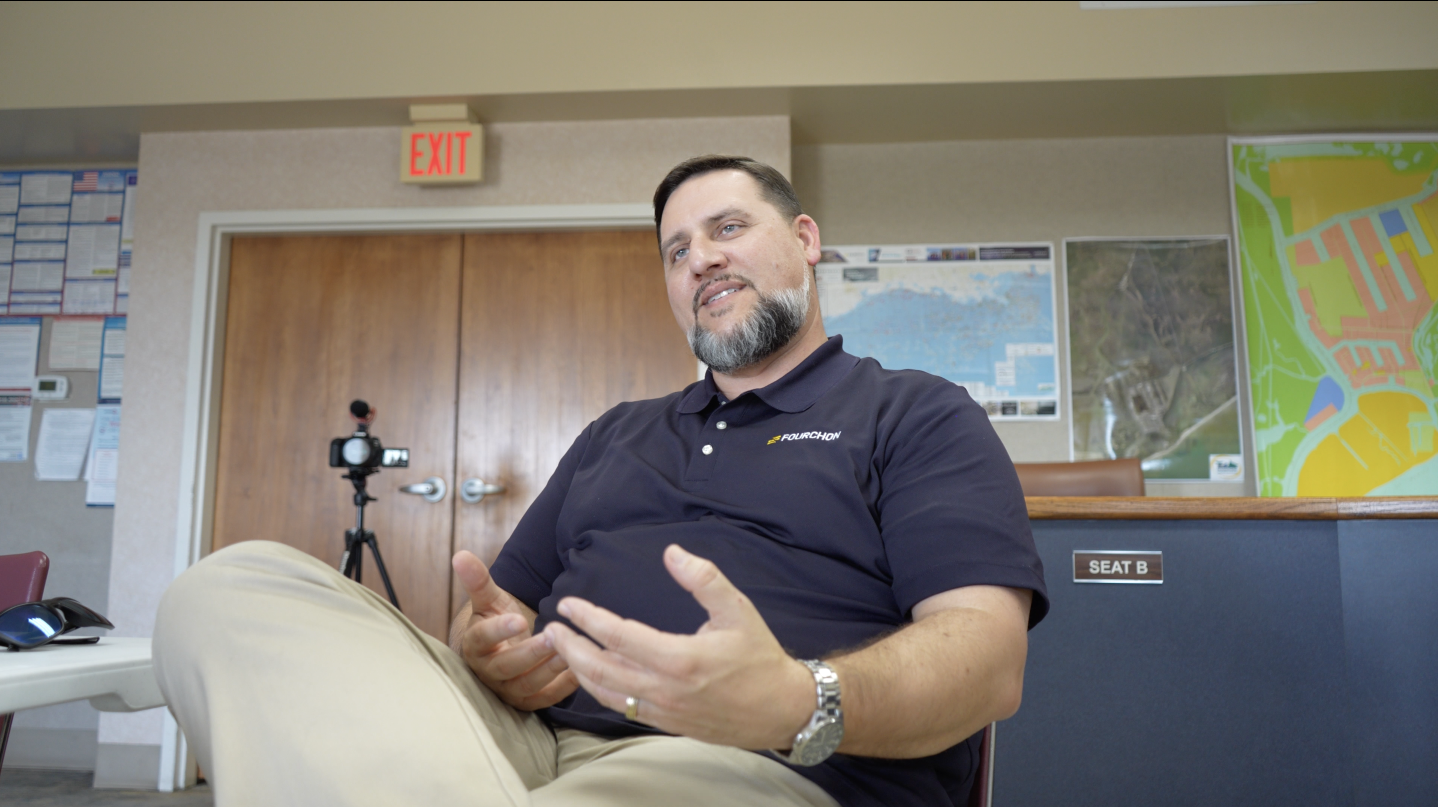
The Backside of the Ice Age
Chett Chiasson is comfortable in front of a camera. He answers questions with a clipped eloquence that video editors dream about. His words are tinged with a Southern accent, and his gaze is piercing. Nearly every answer of his starts with “I can tell you this:” The clause is pressed out by a mix of forces: an awareness of the contentiousness of climate change, a vigilance around bad faith reporting, and a protectiveness of his life’s work, both in the oil industry and in conservation. As we set up our mics, he jokes about how the incessant press attention surrounding the 2010 oil spill was a media training crash course, whether he wanted to or not. The week that the Deepwater Horizon exploded was Chett’s first on the job.
Over his 13 year tenure, Chett has worked closely with Chevron, Shell, and other oil corporations. In that capacity, he fits an archetype that parts of the climate movement have come to antagonize as chiefly responsible for the crisis. I came in with a sense of caution learned from those narratives, but he speaks about his work with disarming earnestness. Without hesitation, he details the schedules, contracts, suppliers, and shipping logistics that make the port tick. In his eyes, he works towards a noble goal: powering the country, getting people the supplies they need to survive.
Chett has deep roots in the region — four generations of Chiassons have spent their lives in South LaFourche. “We all grew up here, continue to grow up here,” he says. “My great-grandparents and grandparents lived off the land. They were fishermen.” The longest he’s been away from the parish was his four years of college at Louisiana State University in Baton Rouge, just two hours away by car. Almost immediately after graduation, he came back to South LaFourche to raise his family. The bayou is the backdrop of his entire life, and he speaks with pride about the protective marsh terracing projects that the Port has undertaken with Chevron.
Part of me winces. The infrastructure that Chett runs facilitates the U.S. consuming billions of barrels of oil, creating emissions that result in stronger, more frequent hurricanes in the region. Efforts at conserving marsh acreage feel like they’re ignoring the bigger picture.
“It is rare — and surprising — to launch hundreds of millions of dollars of climate solutions while harboring skepticism towards human-caused climate change.”
Yet the gentleness in Chett’s voice betrays a deep-seated appreciation for nature, the same indebtedness to the natural world that explains why “conservative” and “conservationist” share a linguistic root. His ancestors had been fishermen, living off the land; now, his work sustains thousands of families in the region, including his own. Regardless of the consequences, he is living some permutation of the American dream. I swallow my suspicions and listen, and we continue our rhetorical game of chicken.
It isn’t long until we get to talking about his stance on climate action. Chett mentions that “we’re on the backside of the ice age, right?” Lyn and I prompt him to explain further. “Do humans have some way of increasing that or the time of the warming? Probably. But the whole mindset of it’s all of our fault, I don’t think it's correct. The earth does things on its own.” This is only a partial truth; anthropogenic climate change is a well-established fact. The rate of warming has increased in lock-step with rising carbon emissions over the last 150 years.
I disagree with Chett, but this tension is exactly what Lyn and I are looking for. We had decided to film here for the port’s world-class, boundary-pushing work with offshore wind energy generation and dredging that reinforces local marshes and barrier islands. It is rare — and surprising — to launch hundreds of millions of dollars of climate solutions while harboring skepticism towards human-caused climate change.
Framing climate change as a phenomenon that isn’t influenced by human inputs allows someone to internally make sense of the consequences of it without having to take urgent action to address the problem. But climate skeptics still need to adapt to rising seas and more powerful storms in order to maintain their basic quality of life.
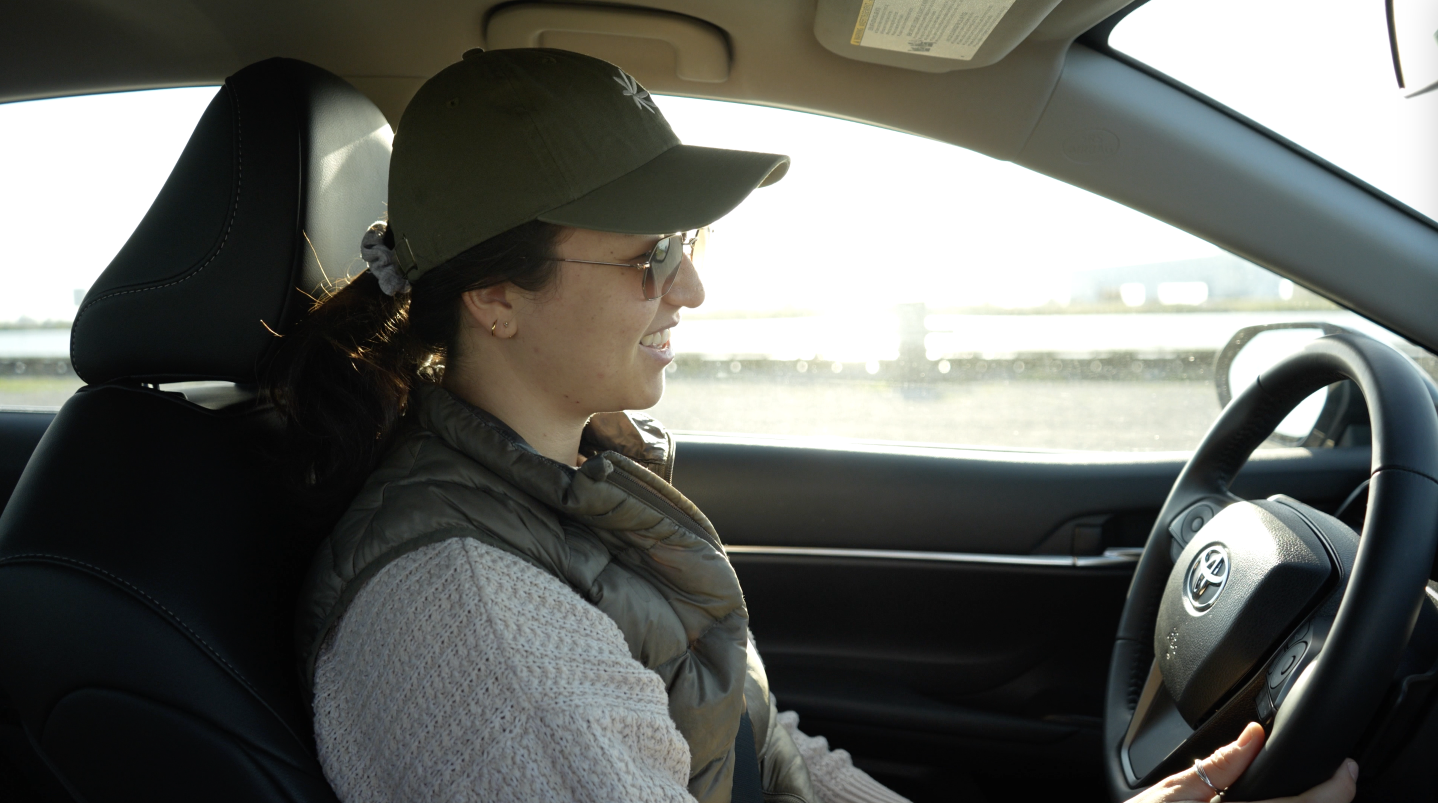
The Weight of a Burning Planet
I joke to Lyn that it feels like we’re LARPing as journalists, sticking our noses in places we have no business being in, doing our best to be the committed, objective observers this topic deserves. But this is personal for me. My childhood home is wrapped in wildfire smoke during what used to be the most beautiful months of the year. I see the people I love being deflated by the weight of a burning planet. It’s bizarre to be branded the resident pronatalist among my friends at age 19, because a non-trivial number of conversations end with me convincing them they should still have kids despite impending climate collapse.
“When fighting the uphill battle for awareness, advocates needed something, anything, to make people recognize the disaster the world seemed to be sleepwalking into.”
The world learned about carbon-induced global warming in 1955, when Gilbert Plass published a seminal paper theorizing the atmospheric greenhouse effect. I learned about it the way most modern people do, through dying polar bears and photos of a smog-choked Beijing. My introduction to the topic was downstream of well-intentioned activist groups, righteous political advocates, and outspoken citizens trying to bring the issue to the forefront of public consciousness. When fighting the uphill battle for awareness, advocates needed something, anything, to make people recognize the disaster the world seemed to be sleepwalking into. All narrative tools were on the table — including, and especially, fear.
What we’ve found in years since is that those narratives were incredibly effective — perhaps too effective. According to a 2021 poll conducted by the Lancet, 75 percent of youth around the world now feel that the future is frightening due to climate change. A 2022 Yale study found that only 38 percent of Americans feel even somewhat hopeful about humanity’s prospects of adapting to climate change. We’ve been met with the slow, scary realization that the result of fear-based communication appears to be paralysis, rather than action.
This paralysis is propelled by the fact that the solutions we’ve been pursuing feel pathetically inadequate. Authority figures, responding to the “demands” of astroturfed advocacy groups, have told us to recycle plastic, only for it to become contaminated trash that costs twice as much for cities to dispose of. Electric cars are presented as an individualistic climate solution for personal mobility, but building their batteries requires the ecologically destructive mining of rare-earth minerals. Buzzy carbon accounting start-ups continually pop up like a game of Whack-a-Mole, convincing venture capitalists and jaded software engineers that tracking emissions will save the world (myself included). Personally and institutionally, frustration reigns.
Driving this feeling is the idea that global net carbon emissions are the only thing to focus on. It’s a directionally correct idea: if society reduces emissions enough, it is true that, eventually, we will reach net zero. But in conversations with Chett, and filming the documentary, we found that carbon accounting can be emotionally surreal to most. For people like Chett, who don’t believe in anthropogenic climate change, there is nothing appealing about counting what they consider to be intangible magic beans. And for people like me, who do believe in human-caused climate change, it’s not compelling to ask others to sacrifice their quality of life for a vague sense of environmental responsibility.
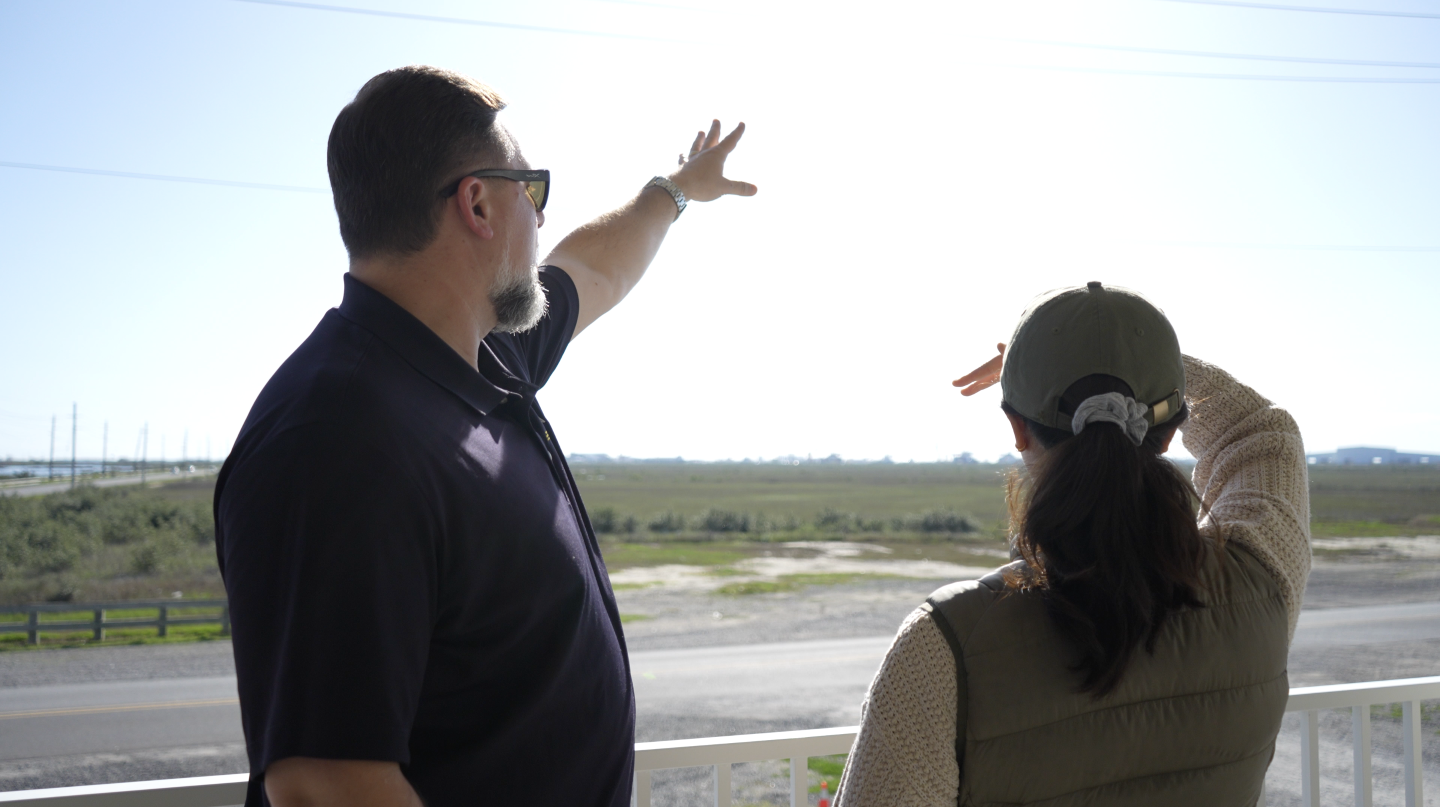
The Case for Resilience
Our interview ends with Chett recounting a recent dredging project at the port. Construction partners toiled, mornings, afternoons, and evenings, moving a small town’s worth of dirt to form a conservation region from the millions of cubic yards of sediment displaced by deepening and widening the port. These barriers — inspired by nature, but man made — are intended to protect fisheries and help lessen the impacts of flooding during storms. “It’s the type of work that you do in an open marsh area where you lost a lot of that marsh acreage,” he says. “It provides protection.”
“Levees and elevated highways don’t usually come to mind when thinking of technologically-enabled climate solutions. They look like earthworks, more fit for the past than the future.”
Chett gestures vaguely off the balcony into the distance to indicate where it is. Lyn and I look at each other, and then back at him: we need to see it. The consideration shows on Chett’s face — a small glance at his watch, a mental calculation of transit time — until a yes bubbles out from him. We disassemble our equipment, haphazardly toss tripods into the trunk, and hurtle down the dirt road to the site. As we tour through the port, we pepper Chett with questions. What does this do? How long did it take to build? He smiles bashfully, and starts giving us answers to questions we haven’t yet asked. “I never get to take people out here,” he says.
Cranes and intricate machinery line the canal, towering over the busy horizon. Levees and elevated highways don’t usually come to mind when thinking of technologically-enabled climate solutions. They look like earthworks, more fit for the past than the future. The concept of an ecological future usually conjures up an image of sterile white pods trimmed with pruned greenery, but those visions feel alien.
Subtle climate solutions already masquerade as quality-of-life improvements, like walkable urbanism, frequent public transit service, community centers, and wide-spread adoption of heat pumps. And then there are climate solutions that never register at all in the public imagination: gritty, industrial work like repurposing oil production infrastructure, expanding the manufacturing base to enable EV production, and training the one million electricians needed to electrify the United States. This patchwork of solutions is climate realism, and belies the hollow cleanliness we have come to expect from aseptic visions of the future.
“The question is: ‘How should we — how should I — get unstuck?’
We mention these ideas to Chett. He nods with a vigor previously obscured by his steady demeanor. “You know, people come here to fish and enjoy the outdoors, and if at the same time we're building up an economy and creating jobs and creating this energy infrastructure, that’s a win-win, right?… That’s on the side of the angels, everybody can live with that. And that’s the goal here, right?” As he speaks, ships in the canal make a racket, almost replying in agreement.” We’re built higher and stronger and better.”
There’s a knot in the cavity of my chest that wants to resolve but can’t. The question is: “How should we — how should I — get unstuck?” The paradox of Port Fourchon doesn’t free me entirely, but my arm sticks out from the mire.
Chett leaves, and we sit in our rental car crying a tear of catharsis each. Fittingly, our trip ends in a modern monument to fossil fuels: our black rental Honda Civic, now laden with the residue of hours of conversation and covered in crumbs.
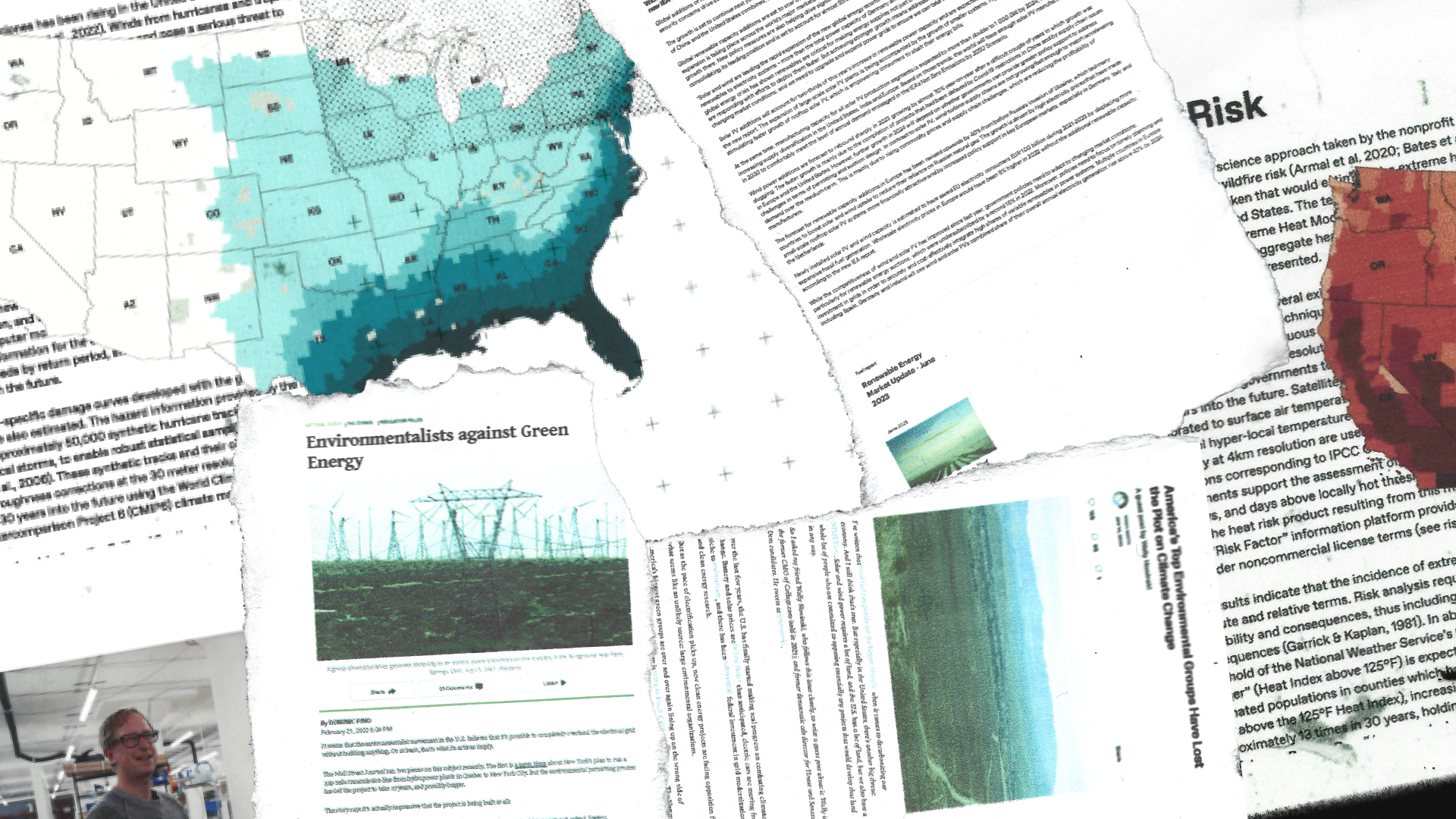
A Beginner’s Guide to the Rest of the Future
It’s been months since we left the port, and I’ve found myself talking about our visit embarrassingly frequently. It feels as though by talking about it loudly and often enough, I’d be able to reach my younger self and shake her out of a learned sense of climate doom. Who would have guessed that Port Fourchon, originally conceived of in the 1960s as an ill-fated banana trading station, was just the anti-paralytic that I needed? Where some counties have had to spend 50 years fighting for a bike lane, a small town in Louisiana had made climate evolution irresistible.
In Port Fourchon, the parameters of life are largely defined by oil infrastructure and its consequences. It is different from everywhere else in the United States only by degree, not kind. It’s a version of climate contradiction, taken to its extremes — we are collectively responsible for both the problem of climate change and our response to it.
“The future is here, with all of its crises and possibilities. It’s just not evenly distributed yet.”
But the more obvious the risks to a place, the greater the urgency of experimentation. The ideas that form here, and other out-of-the-way places around the US, are the seeds of a world transformed. The rural plains of Texas have become nation-leading solar and wind energy production centers. A small town in southwest Utah is home to a research lab that uses techniques originally developed for fracking to both produce and store geothermal energy. In each of these places — Port Fourchon included — the reality of climate change has motivated people to act with a speed and decisiveness that make it feel, to me, that climate resilience is actually possible.
The future is here, with all of its crises and possibilities. It’s just not evenly distributed yet.
A climate future I’m excited to champion is one where there are clear, immediate benefits to the people involved. Solutions that universally resonate treat people as value-based actors in their environment. They are additive, gratifying, scrappy, and lively. It’s clean energy that’s too cheap to meter, a grid that is resilient to attacks, mass public transit, vibrant neighborhoods, bike highways, and lush natural parks. They’re climate solutions that are too good to ignore.
When we began our trip, we went looking for ways to bridge the political divide that has stymied climate action in the United States. Newly built marshes, beginnings of offshore wind infrastructure, and legacy oil machinery fade into the distance behind us as we drive away. There, in our rearview mirror, was our answer.
To support, watch, or hate on the documentary, visit us at unstuck.film :)
Author
Anson Yu
Anson Yu is an engineer and filmmaker with an interest in the climate extended universe. She is often excited.
Editor
Hal Triedman
Hal Triedman is a writer, activist, and musician based in Denver, Colorado. In his day job, he works as a privacy engineer at the Wikimedia Foundation, focusing on differential privacy, AI, and platform policy. You can read more about his work and writing on his personal website.